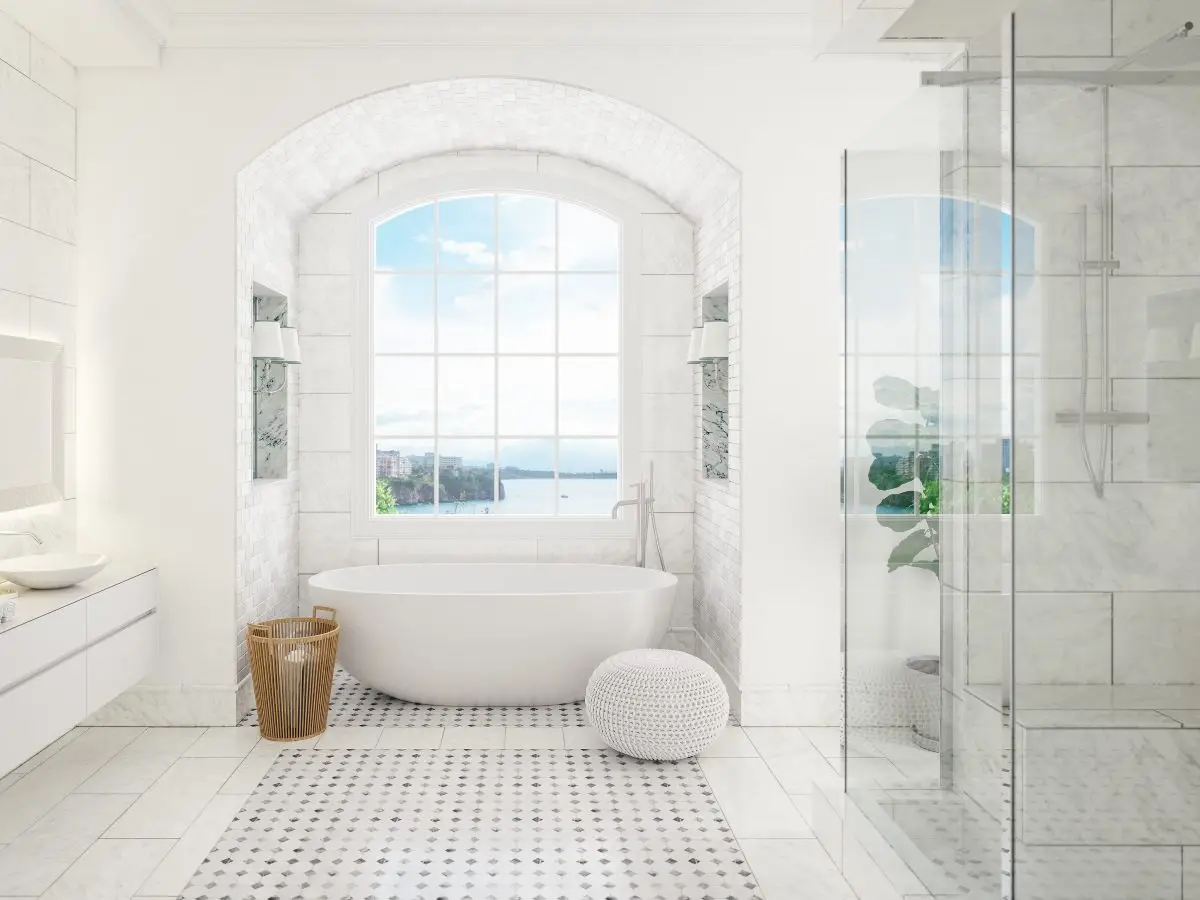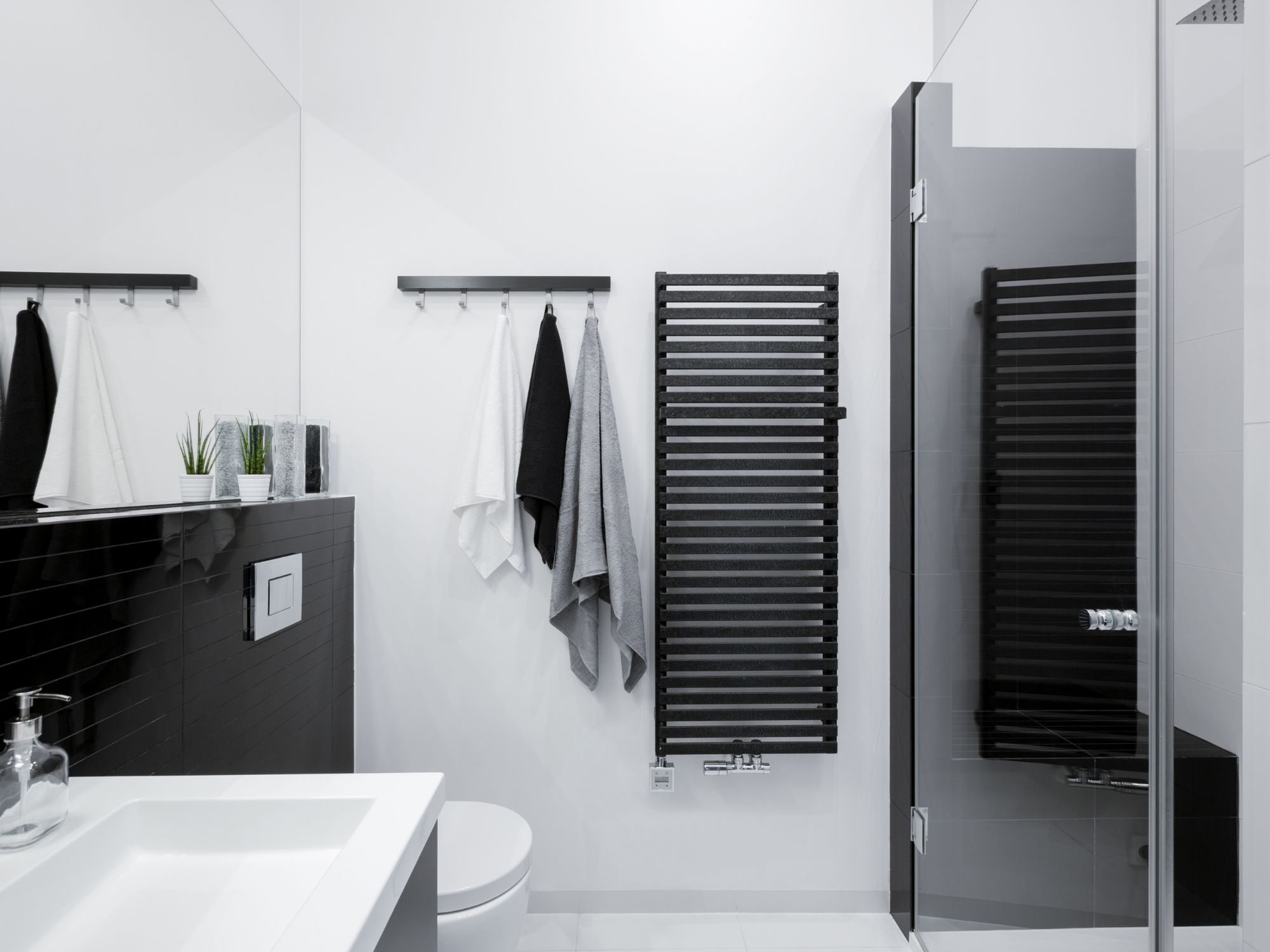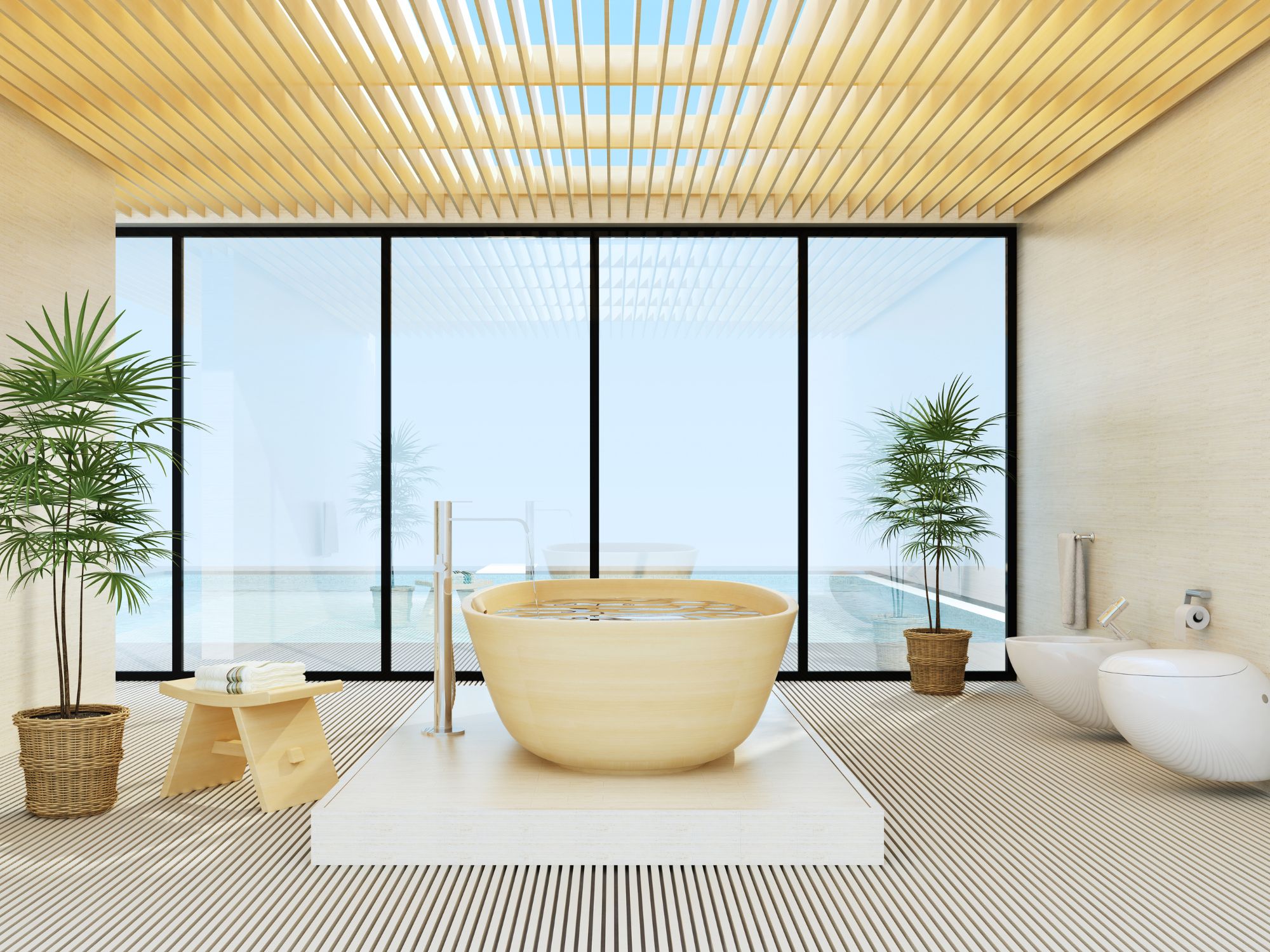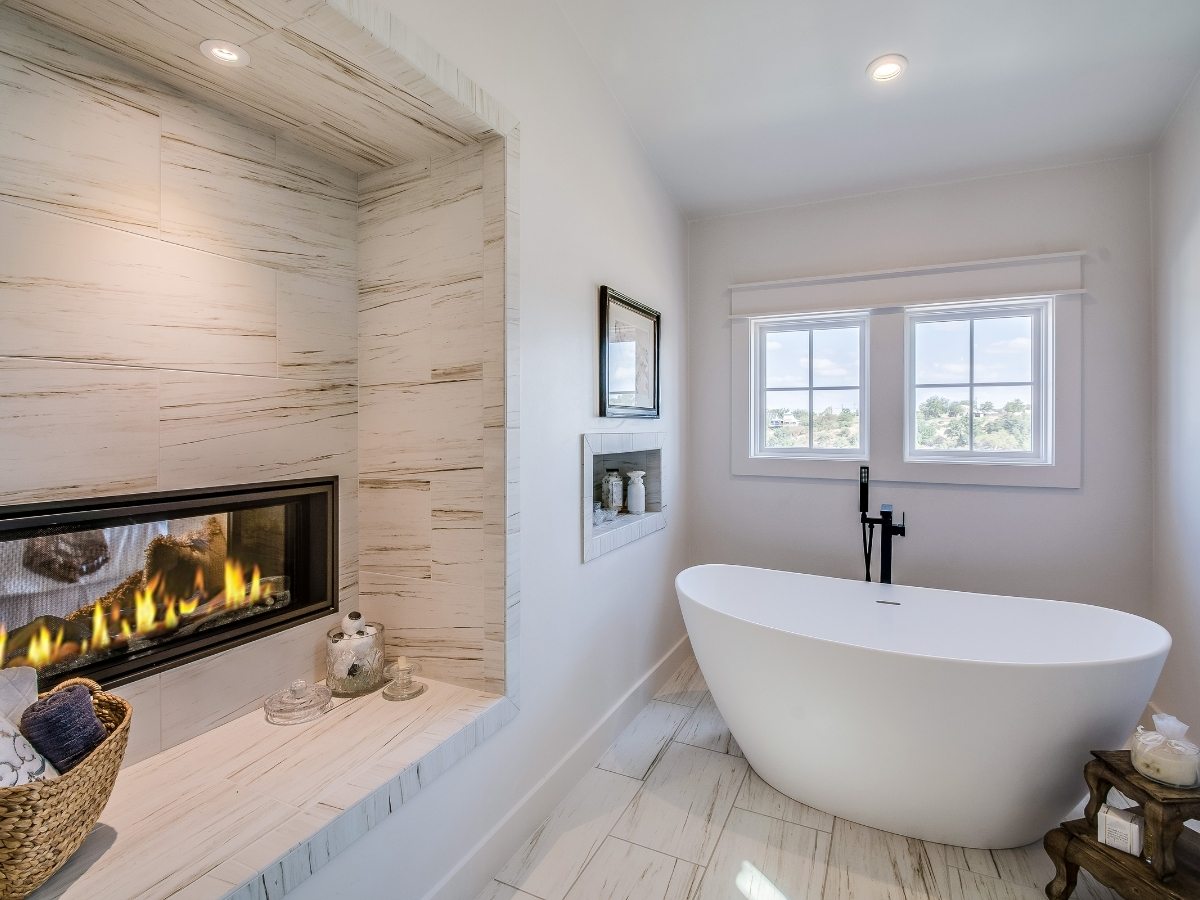This post may contain affiliate links which means I may receive a commission for purchases made through links. I only recommend bathroom storage products that I have personally used or curated specifically after reviewing and ensuring its quality! Learn more on my Private Policy page.
Storage And Bathroom Vanity
A bathroom vanity plays a crucial role in bathroom remodeling – both the functionality and aesthetic appeal of a bathroom space. Serving as a focal point and a practical storage solution, vanities contribute significantly to the overall design and usability of the room.
In this article, we will delve into the importance of bathroom vanities as storage opportunities and provide some valuable insights to help readers choose the perfect vanity for their needs, considering factors such as decor, size, style, aesthetics, and functionality to accommodate various decor preferences.
The Role of Bathroom Vanities in Bathroom Remodel
Bathroom vanities serve as the centerpiece of bathroom design or remodel, offering a combination of functionality and style. Beyond their primary purpose of providing a countertop surface and storage space, vanities set the tone for the entire bathroom aesthetic. They serve as a reflection of personal style and taste while also contributing to the overall functionality and organization of the space.
From minimalist designs with clean lines to ornate vintage styles, bathroom vanities come in a wide range of options to suit diverse decor preferences. Whether your bathroom design leans towards modern sophistication, classic elegance, or something in between, the right vanity can enhance the visual appeal and functionality of the space. Please see our resource page for easy to use bathroom remodel and design software.
Beyond aesthetics, bathroom vanities also play a practical role in daily routines. They provide essential storage for toiletries, towels, and other bathroom essentials, helping to keep the space organized and clutter-free. Additionally, vanities offer a convenient surface for tasks such as grooming, applying makeup, or completing daily skincare routines.
More Than A Statement Piece
In essence, bathroom vanities serve as multifunctional elements that elevate both the form and function of the bathroom space. Choosing the right vanity is essential for creating a harmonious and inviting environment that meets both aesthetic and practical needs.
Shower storage opportunities are also important in organizing an environment that keeps up in a fast-paced world. The shower has become a sanctuary for relaxation and rejuvenation. Shower storage and organization have gained significant importance with recent emphasis on self care and spa like experience at home.
In small spaces innovative hidden and recessed storage solutions provides opportunities to utilize the often-overlooked spaces within a bathroom’s layout, offering a seamless way to organize and store bathroom essentials out of sight, contributing to a cleaner and more streamlined appearance
Purpose of Article
Navigating the process of selecting the ideal bathroom sink vanity can be overwhelming, given the myriad of options available in the market. That’s where this guide comes in. Our goal is to provide readers with valuable insights and practical advice to help them make informed decisions when choosing a bathroom vanity.
Whether you’re embarking on a bathroom renovation project or simply looking to update your current vanity, this guide will serve as a comprehensive resource to guide you through the selection process. We’ll explore key considerations such as size, style, and functionality, catering to various decor preferences ranging from minimalist and modern to vintage and traditional.
By the end of this guide, readers will be equipped with the knowledge and confidence to select the perfect bathroom sink vanity that not only enhances the aesthetics of their space but also meets their practical needs and lifestyle preferences. Let’s dive in and discover the perfect vanity for your bathroom design journey.

Bathroom Vanity – Understanding Your Space
Before diving into the world of bathroom vanities, it’s essential to have a clear understanding of your bathroom space and its specific requirements. This section will guide you through the process of assessing your bathroom dimensions, determining the optimal placement of the vanity, and evaluating your storage needs to ensure a functional and harmonious layout.
Assessing Bathroom Dimensions – Considerations for Size and Layout
The first step in selecting the perfect bathroom vanity is assessing your bathroom dimensions. Measure the length, width, and height of the space to understand its overall size and layout. Considerations for size include not only the physical dimensions of the room but also any architectural features, such as windows, doors, or alcoves, that may impact the placement and size of the vanity.
Take note of any obstacles or limitations, such as plumbing fixtures, electrical outlets, or ventilation ducts, that may affect the placement and configuration of the vanity. Additionally, consider the flow of traffic within the bathroom and ensure that there is adequate clearance around the vanity for comfortable movement and use.
By understanding the dimensions and layout of your bathroom, you can make informed decisions when selecting a vanity that fits seamlessly into the space without overwhelming or overcrowding the room.
Determining the Optimal Placement of the Vanity Within the Bathroom
Once you have assessed the dimensions of your bathroom, the next step is determining the optimal placement of the vanity. Consider factors such as natural light, ventilation, and ease of access when selecting the placement of the vanity within the room.
If possible, position the vanity near a window to maximize natural light and create a bright and airy atmosphere. Ensure that there is sufficient space around the vanity for easy access and use, taking into account the swing of doors and any other fixtures or furniture in the room.
Consider the location of plumbing lines and electrical outlets when determining the placement of the vanity. Placing the vanity near existing plumbing connections can minimize installation costs and simplify the plumbing process.
By strategically placing the vanity within the bathroom, you can optimize the flow and functionality of the space while creating a visually appealing and cohesive layout.
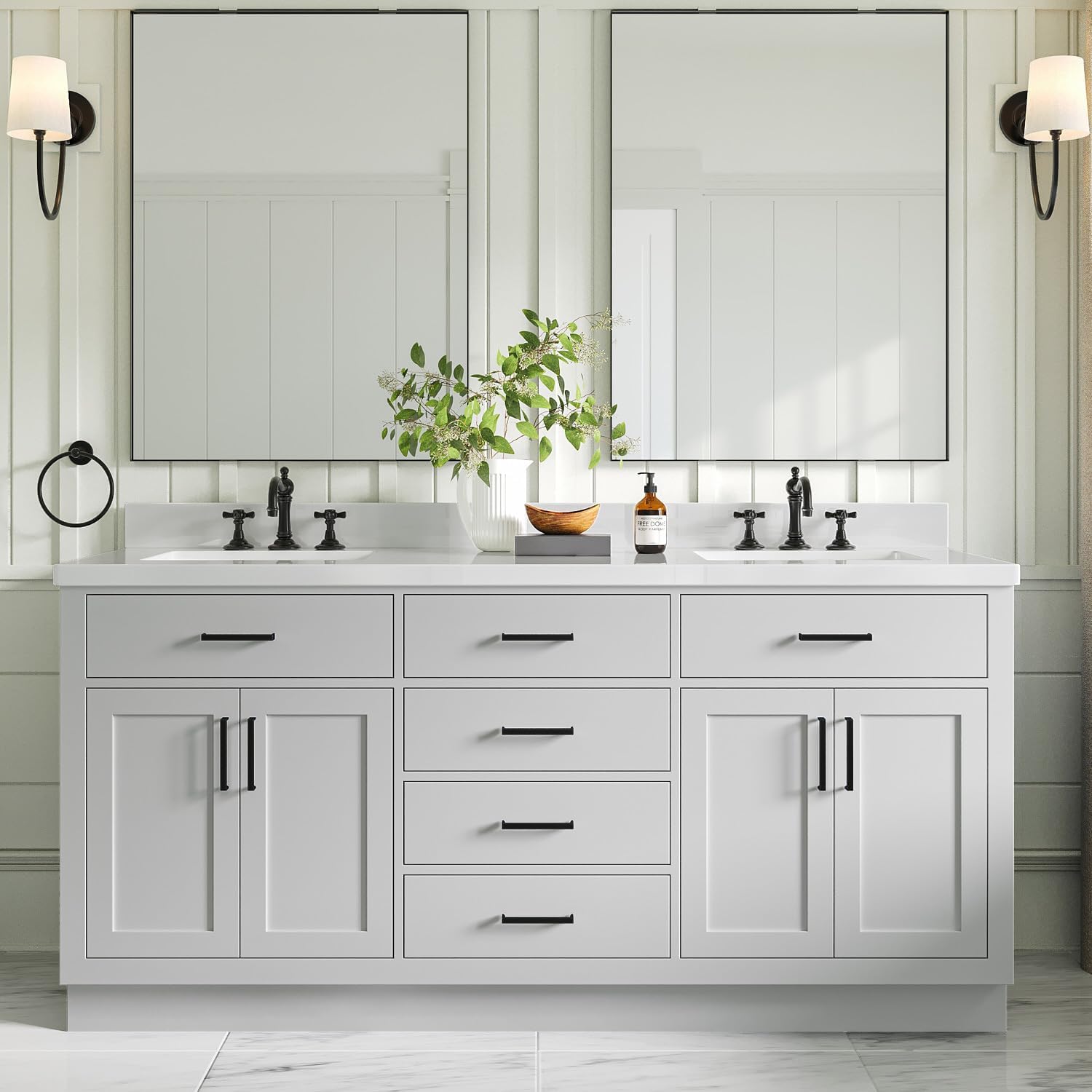
Evaluating Storage Needs and Space Requirements for Toiletries, Towels, and Essentials
One of the primary functions of a bathroom vanity is to provide storage space for toiletries, towels, and other essentials. Evaluate your storage needs and space requirements to determine the size and configuration of the vanity that best meets your needs.
Consider the number of people using the bathroom and their individual storage requirements. Assess the types of items that need to be stored, such as toiletries, towels, cleaning supplies, and personal care products.
Choose a vanity with adequate storage options, such as drawers, cabinets, or shelves, to accommodate your belongings and keep them organized and easily accessible. Opt for features such as adjustable shelves or dividers to customize the storage space to suit your specific needs.
Additionally, consider the space available for the vanity within the bathroom and ensure that it fits comfortably without overwhelming the room. A vanity that offers ample storage space while maintaining a streamlined and uncluttered appearance will enhance the functionality and aesthetics of the space.
By evaluating your storage needs and space requirements, you can select a vanity that not only meets your practical needs but also enhances the overall organization and efficiency of your bathroom space.
Bathroom Vanity – Exploring Different Vanity Styles
Bathroom vanities come in various styles, each with its own unique characteristics and aesthetic appeal. In this section, we’ll explore different vanity styles to help you find the perfect match for your bathroom design. We’ll start with the minimalist style, characterized by clean lines, simplicity, and functionality.
Minimalist Decor Style
Minimalist bathroom vanities embrace the principles of simplicity and understated elegance. They feature clean lines, sleek surfaces, and minimal ornamentation, creating a sense of calm and tranquility in the bathroom space. Here are some key characteristics and features of minimalist bathroom vanities:
Characteristics and Features of Minimalist Bathroom Vanities
Clean Lines: Minimalist vanities often feature straight lines and simple geometric shapes, avoiding ornate details or embellishments.
Sleek Surfaces: Smooth and uncluttered surfaces contribute to the minimalist aesthetic, with minimal texture or pattern.
Neutral Color Palette: Neutral colors such as white, gray, and beige are commonly used in minimalist design, creating a sense of serenity and sophistication.
Functional Design: Minimalist vanities prioritize functionality and efficiency, with ample storage space and streamlined features.
Recommended Materials, Finishes, and Design Elements for Achieving a Minimalist Look
Materials: Opt for high-quality materials such as solid wood, plywood, or medium-density fiberboard (MDF) with a smooth and uniform finish. Consider materials with minimal grain or texture to maintain a clean and contemporary look.
Finishes: Choose finishes that enhance the minimalist aesthetic, such as matte or satin finishes in neutral tones. Avoid glossy finishes or elaborate patterns that may detract from the simplicity of the design.
Design Elements: Keep design elements simple and understated, focusing on functionality and practicality. Choose hardware such as sleek drawer pulls or minimalist knobs in brushed or matte finishes. Consider integrated handles or touch-latch mechanisms for a seamless and minimalist appearance.
Incorporating a minimalist bathroom vanity into your space can create a serene and clutter-free environment that promotes relaxation and tranquility. By focusing on clean lines, sleek surfaces, and functional design, you can achieve a minimalist look that enhances the overall aesthetic of your bathroom.
Next, we’ll explore other vanity styles, including vintage, modern, contemporary, and traditional, to provide you with a comprehensive overview of the various options available for your bathroom design. Whether you prefer the timeless charm of vintage-inspired vanities or the sleek sophistication of modern designs, there’s a style to suit every taste and preference.
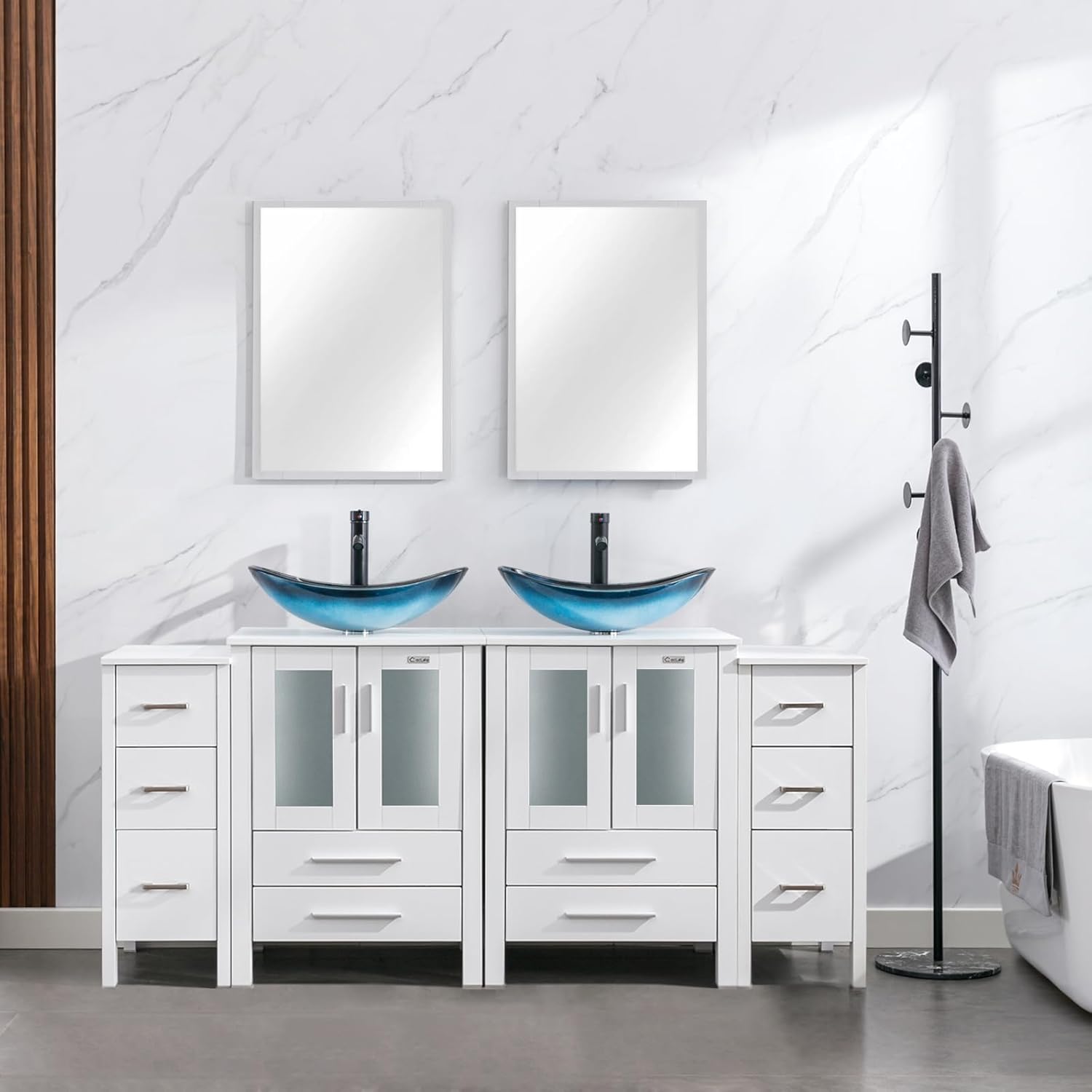
Vintage Decor Style
Vintage-inspired bathroom vanities evoke a sense of nostalgia and charm, bringing the elegance and character of bygone eras into the modern bathroom space. Incorporating timeless design elements and classic finishes, vintage-style vanities add a touch of warmth and personality to any bathroom. Let’s explore the characteristics, features, and recommended design elements for creating a vintage ambiance with your bathroom vanity.
Characteristics and Features of Vintage-Inspired Bathroom Vanities
Ornate Details: Vintage-style vanities often feature intricate carvings, decorative molding, and embellishments reminiscent of antique furniture.
Curved Lines: Rounded edges, curved legs, and scalloped edges are common design elements found in vintage-inspired vanities, adding a sense of elegance and grace.
Rich Finishes: Dark wood tones such as mahogany, walnut, or cherry are popular choices for vintage-style vanities, imparting a sense of warmth and richness to the space.
Antique Hardware: Brass, bronze, or pewter hardware with intricate designs and ornate detailing accentuate the vintage aesthetic of the vanity.
Furniture-Like Appearance: Vintage-style vanities are designed to resemble antique dressers or chests of drawers, with furniture-style legs, decorative feet, and raised panels contributing to their classic appeal.
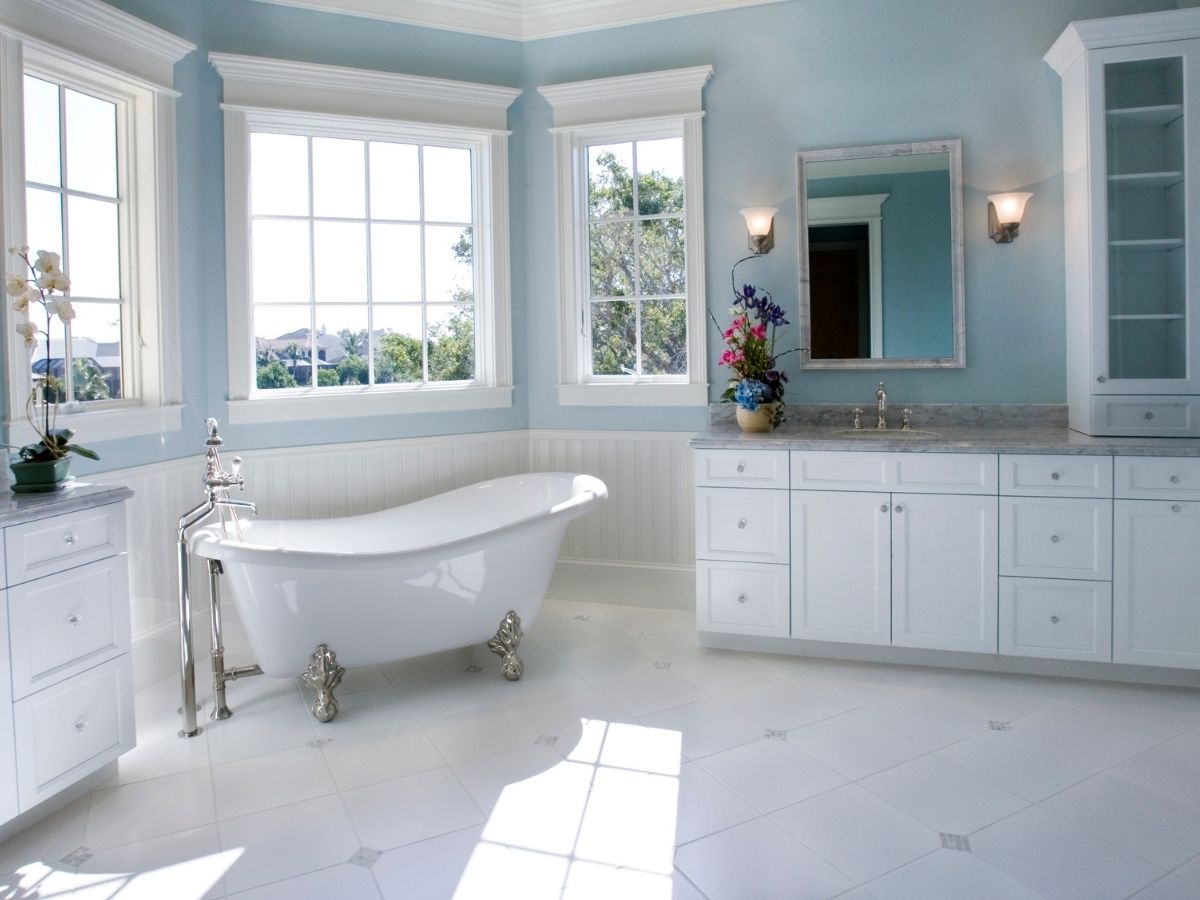
Recommended Materials, Finishes, and Design Elements for Creating a Vintage Ambiance
Materials: Choose solid wood or wood veneer construction for an authentic vintage look and feel. Oak, maple, and pine are popular choices for vintage-style vanities, offering durability and natural beauty.
Distressed Finishes: Consider finishes such as antiqued or distressed paint or stain to create a weathered, aged appearance that enhances the vintage charm of the vanity.
Decorative Accents: Incorporate decorative accents such as beadboard panels, raised molding, or inset panels to add texture and visual interest to the vanity.
Clawfoot Tub: Pairing a vintage-style vanity with a clawfoot tub enhances the nostalgic ambiance of the bathroom, creating a cohesive and timeless look.
Vintage-Inspired Lighting: Choose sconces, chandeliers, or pendant lights with vintage-inspired designs to complement the style of the vanity and complete the vintage aesthetic of the bathroom.
By incorporating these recommended materials, finishes, and design elements, you can create a vintage-inspired bathroom vanity that exudes timeless elegance and charm. Whether you’re renovating a historic home or simply want to add a touch of vintage flair to your bathroom, a vintage-style vanity offers an opportunity to infuse your space with character and personality.
In summary, vintage-style bathroom vanities are characterized by ornate details, curved lines, rich finishes, and antique hardware, evoking a sense of nostalgia and elegance. By choosing the right materials, finishes, and design elements, you can create a vintage ambiance in your bathroom that celebrates the timeless beauty of the past while adding warmth and character to your modern home.
Modern Decor Style
Modern bathroom vanities epitomize sleekness, simplicity, and functionality. They are characterized by clean lines, minimalist design, and innovative features that create a sophisticated and contemporary ambiance in the bathroom space. In this section, we’ll explore the defining characteristics and recommended design elements for achieving a modern aesthetic with your bathroom vanity.
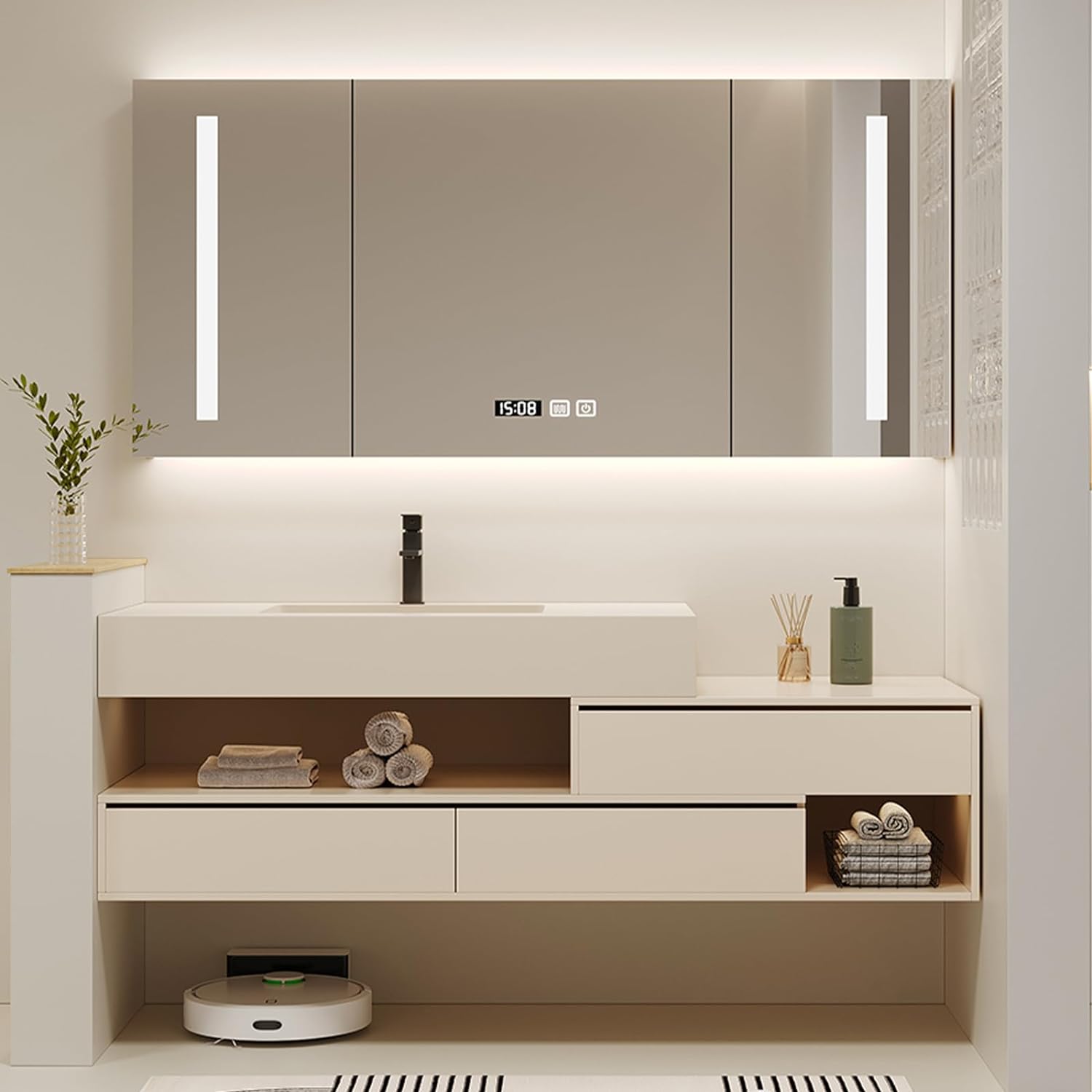
Characteristics and Features of Modern Bathroom Vanities
Clean Lines: Modern vanities feature straight, clean lines with sharp angles and geometric shapes, creating a streamlined and minimalist look.
Minimalist Design: Simplified forms and uncluttered surfaces are hallmarks of modern vanities, emphasizing functionality and efficiency.
Integrated Sinks: Modern vanities often incorporate integrated sinks made from materials such as porcelain, glass, or stainless steel, seamlessly blending with the countertop for a cohesive and contemporary appearance.
Floating Design: Floating vanities, which are mounted to the wall without visible support legs, enhance the illusion of space and contribute to the modern aesthetic by creating a sleek and weightless appearance.
Innovative Storage Solutions: Modern vanities prioritize storage efficiency with features such as deep drawers, pull-out shelves, and concealed compartments, maximizing organization and minimizing clutter.
Materials, Finishes, and Design Elements for a Sleek and Contemporary Aesthetic
Materials: Choose materials such as engineered wood, laminate, or acrylic for a modern vanity with a smooth and uniform finish. These materials offer durability and versatility while providing a clean and contemporary look.
High-gloss Finishes: Opt for glossy finishes in neutral tones such as white, gray, or black to enhance the modern aesthetic of the vanity. Glossy surfaces reflect light and create a sense of brightness and openness in the bathroom.
Metal Accents: Incorporate metal accents such as brushed nickel, chrome, or stainless steel for hardware, faucets, and legs to add a touch of sophistication and modernity to the vanity.
Integrated Lighting: Consider vanities with built-in LED lighting strips or backlit mirrors to provide functional illumination while adding a modern and luxurious touch to the space.
Minimalist Hardware: Choose sleek and minimalist hardware such as flat drawer pulls, recessed handles, or touch-latch mechanisms for a clean and contemporary look that complements the overall design of the vanity.
By incorporating these recommended materials, finishes, and design elements, you can create a modern bathroom vanity that exudes sophistication and style. Whether you prefer a floating vanity with integrated sinks or a wall-mounted design with sleek lines and minimalist hardware, a modern vanity offers endless possibilities for creating a sleek and contemporary bathroom space.
In summary, modern bathroom vanities are defined by clean lines, minimalist design, and innovative features that create a sophisticated and contemporary ambiance. By choosing the right materials, finishes, and design elements, you can achieve a sleek and modern aesthetic in your bathroom that reflects your personal style and enhances the overall look and feel of the space.
Contemporary Decor Style
Contemporary bathroom vanities strike a delicate balance between modern innovation and timeless elegance. They blend sleek, minimalist design elements with classic touches to create a sophisticated and versatile aesthetic that adapts to various decor styles. In this section, we’ll explore the defining characteristics and recommended design elements for achieving a contemporary style with your bathroom vanity.
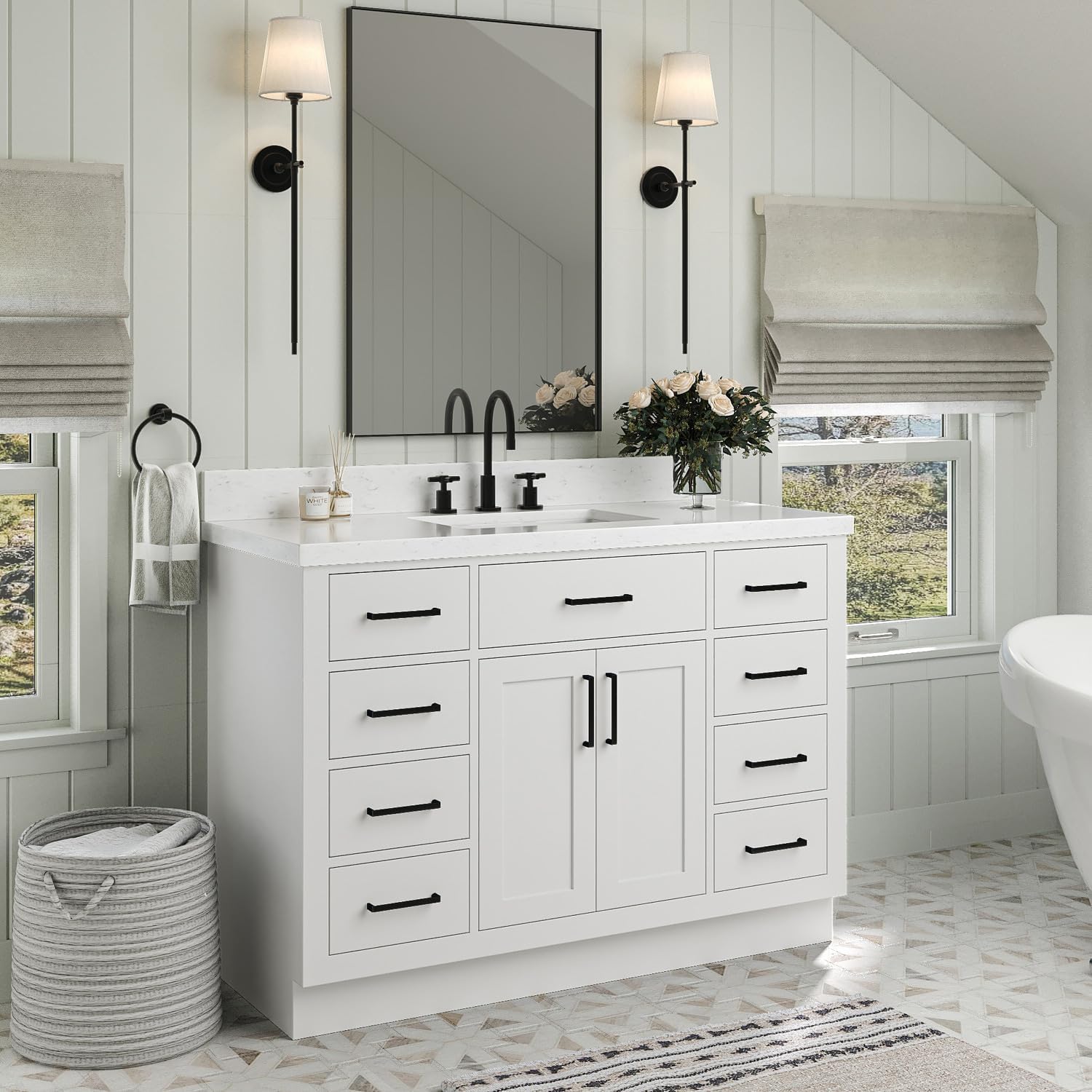
Characteristics and Features of Contemporary Bathroom Vanities
Clean Lines with Subtle Curves: Contemporary vanities feature clean, straight lines with subtle curves or angles, adding visual interest without detracting from the overall minimalist aesthetic.
Mixed Materials: Contemporary vanities often incorporate a mix of materials, such as wood, metal, and glass, to create texture and contrast in the design. These materials are selected for their durability, versatility, and aesthetic appeal.
Neutral Color Palette: Contemporary vanities typically feature a neutral color palette, including shades of white, gray, beige, and black, creating a sense of harmony and cohesion in the space.
Innovative Storage Solutions: Contemporary vanities prioritize functionality and organization with innovative storage solutions such as pull-out drawers, open shelving, and built-in organizers, maximizing usability without compromising on style.
Materials, Finishes, and Design Elements for a Blend of Modern and Traditional Elements
Materials: Choose high-quality materials such as solid wood, engineered wood, or laminate for a contemporary vanity with a refined and polished appearance. Consider incorporating contrasting materials such as wood and metal or wood and glass to add depth and visual interest to the design.
Matte Finishes: Opt for matte finishes in neutral tones for a contemporary vanity with a modern yet understated look. Matte finishes offer a soft and luxurious texture that complements the clean lines and minimalist design of contemporary vanities.
Minimalist Hardware: Select sleek and minimalist hardware such as flat drawer pulls, slim handles, or concealed hinges for a contemporary vanity that exudes sophistication and style. Avoid ornate or decorative hardware that may detract from the overall minimalist aesthetic.
Geometric Patterns: Introduce geometric patterns or textures into the design through materials such as tiles, countertops, or backsplashes to add visual interest and dimension to the vanity. Geometric patterns can range from subtle to bold, allowing you to customize the look to suit your personal style.
Statement Lighting: Consider incorporating statement lighting fixtures such as pendant lights, sconces, or chandeliers to add drama and ambiance to the bathroom space. Choose fixtures with sleek, modern designs that complement the overall aesthetic of the vanity and enhance the contemporary feel of the room.
By incorporating these recommended materials, finishes, and design elements, you can create a contemporary bathroom vanity that combines modern innovation with timeless elegance. Whether you prefer a sleek and minimalist design or a more eclectic and layered approach, a contemporary vanity offers endless possibilities for creating a stylish and sophisticated bathroom space.
In summary, contemporary bathroom vanities are characterized by clean lines, mixed materials, and innovative storage solutions that create a versatile and sophisticated aesthetic. By selecting the right materials, finishes, and design elements, you can achieve a contemporary style that blends modern and traditional elements seamlessly, reflecting your personal taste and enhancing the overall look and feel of your bathroom.
Traditional Decor Style
Traditional bathroom vanities exude elegance, warmth, and timeless charm. Inspired by classical design elements and historical influences, traditional-style vanities offer a sense of luxury and sophistication that never goes out of style. In this section, we’ll explore the defining characteristics and recommended design elements for achieving a traditional aesthetic with your bathroom vanity.
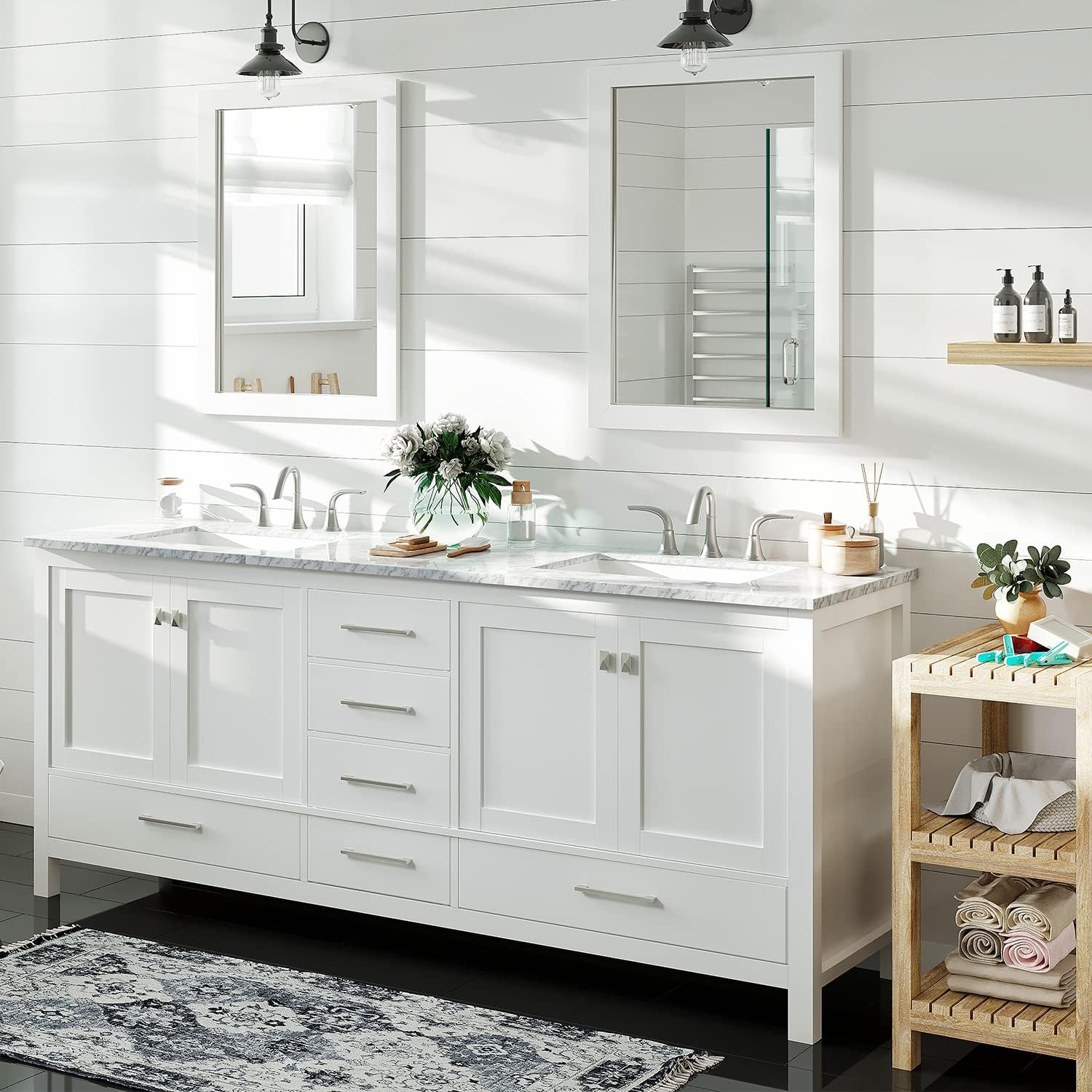
Characteristics and Features of Traditional Bathroom Vanities
Ornate Details: Traditional vanities are known for their intricate carvings, decorative molding, and embellishments that add depth and richness to the design. These ornate details evoke a sense of old-world craftsmanship and elegance.
Curved Lines and Gentle Curves: Traditional vanities often feature curved edges, rounded corners, and gentle curves that soften the overall silhouette and create a sense of warmth and familiarity.
Rich, Warm Finishes: Traditional vanities typically feature rich, warm finishes such as cherry, mahogany, or walnut, which add depth and character to the design. These finishes evoke a sense of luxury and sophistication while complementing a variety of decor styles.
Furniture-like Appearance: Traditional vanities are designed to resemble antique furniture pieces, with features such as turned legs, bun feet, and raised panels that mimic the look of vintage dressers or chests of drawers.
Classic Hardware: Traditional vanities often feature ornate hardware such as brass, bronze, or pewter drawer pulls, knobs, and hinges, which add a touch of elegance and refinement to the design.
Recommended Materials, Finishes, and Design Elements for a Classic and Timeless Look
Materials: Choose high-quality materials such as solid wood or wood veneer for a traditional vanity with a classic and timeless look. Opt for hardwoods such as oak, maple, or cherry for their durability and natural beauty.
Handcrafted Details: Incorporate handcrafted details such as carved accents, raised panels, and decorative molding to add depth and dimension to the design. These custom touches evoke the craftsmanship and attention to detail of traditional woodworking techniques.
Antique-inspired Finishes: Select finishes such as distressed or antiqued paint or stain to create a weathered, aged appearance that enhances the traditional charm of the vanity. These finishes add a sense of history and character to the design, giving it a lived-in, well-loved feel.
Marble or Granite Countertops: Choose countertops made from natural stone such as marble or granite for a luxurious and elegant finish that complements the traditional style of the vanity. These timeless materials add sophistication and durability to the design while providing a durable and practical surface for daily use.
Porcelain Sinks: Opt for porcelain sinks with classic, timeless designs such as undermount or pedestal sinks to complement the traditional aesthetic of the vanity. Porcelain sinks are durable, easy to clean, and resistant to stains and scratches, making them ideal for traditional bathroom settings.
By incorporating these recommended materials, finishes, and design elements, you can create a traditional bathroom vanity that exudes timeless elegance and sophistication. Whether you prefer a rich, warm finish with intricate detailing or a more understated design with classic hardware and handcrafted accents, a traditional vanity offers endless possibilities for creating a classic and timeless look in your bathroom.
In summary, traditional bathroom vanities are characterized by ornate details, rich finishes, and classic hardware that evoke a sense of luxury and sophistication. By selecting the right materials, finishes, and design elements, you can achieve a classic and timeless look that adds warmth and elegance to your bathroom space, creating a welcoming retreat that you’ll enjoy for years to come.
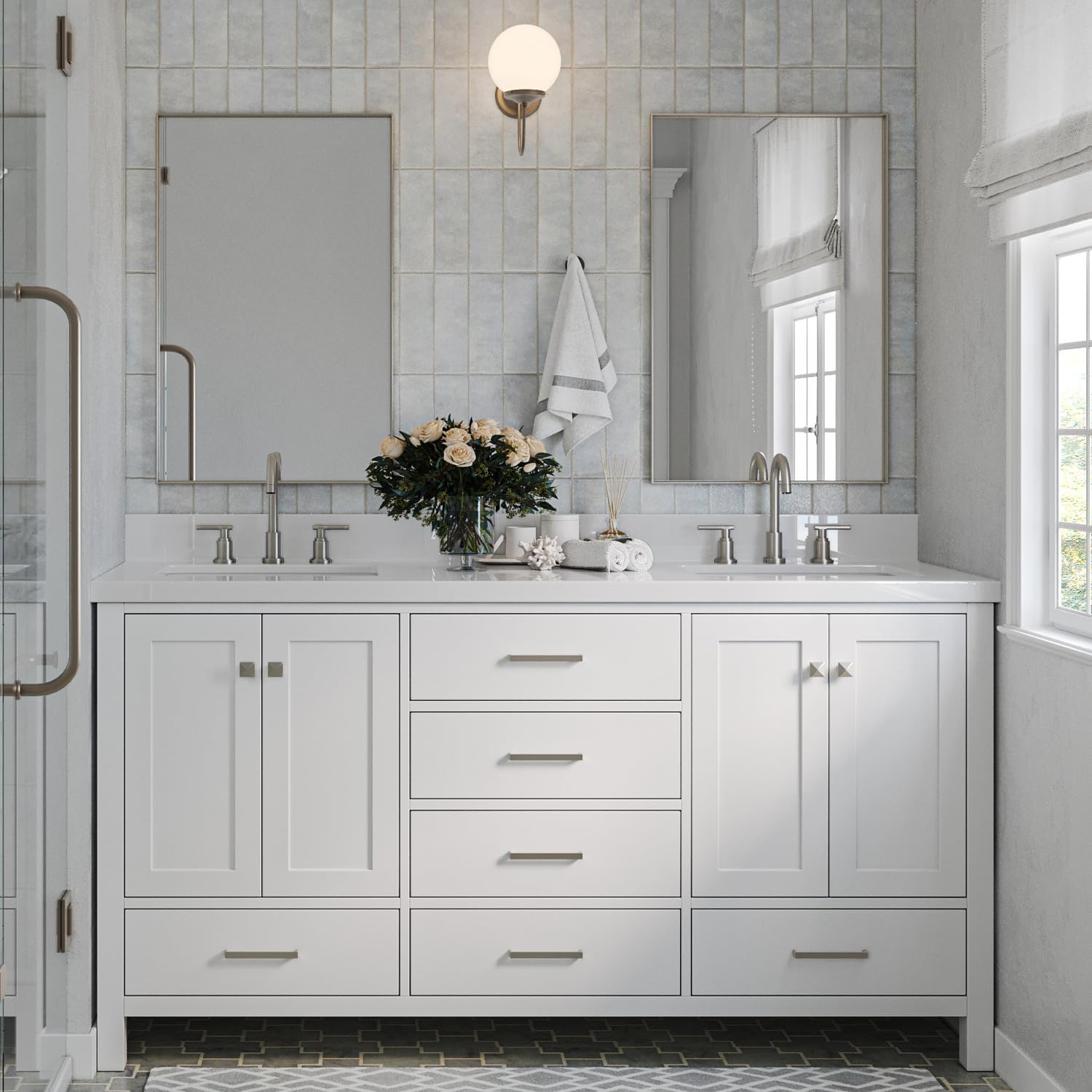
Choosing the Right Bathroom Vanity for Your Style and Needs
Selecting the perfect bathroom vanity involves careful consideration of both style preferences and practical needs. From matching the vanity style to the overall decor theme to evaluating functionality and balancing aesthetics with practicality, there are several key factors to keep in mind to ensure that your vanity enhances both the beauty and functionality of your bathroom space.
Matching Vanity Style to Bathroom Decor Theme
When choosing a bathroom vanity, it’s essential to consider how it will fit within the overall decor theme of the bathroom. Whether your style leans towards minimalist, vintage, modern, contemporary, or traditional, selecting a vanity that complements the existing decor will help create a cohesive and harmonious look.
For a minimalist bathroom with clean lines and simplicity, opt for a vanity with sleek surfaces, minimalist hardware, and a neutral color palette. Consider materials such as engineered wood or laminate for a modern look that complements the minimalist aesthetic.
In a vintage-inspired bathroom, choose a vanity with ornate details, curved lines, and rich finishes such as mahogany or walnut. Look for antique-inspired hardware and handcrafted accents to enhance the vintage charm of the space.
For a modern bathroom with a sleek and contemporary aesthetic, select a vanity with clean lines, minimalist design, and innovative features such as integrated sinks and floating or wall-mounted designs. Choose materials such as engineered wood or acrylic with matte finishes for a modern look that exudes sophistication.
In a contemporary bathroom, aim for a blend of modern and traditional elements with a focus on clean lines, mixed materials, and innovative storage solutions. Incorporate neutral colors, minimalist hardware, and statement lighting to create a stylish and sophisticated space that reflects your personal style.
For a traditional bathroom with timeless elegance and charm, opt for a vanity with ornate details, curved lines, and rich finishes such as cherry or mahogany. Choose classic hardware, handcrafted accents, and antique-inspired finishes to enhance the traditional aesthetic of the space.
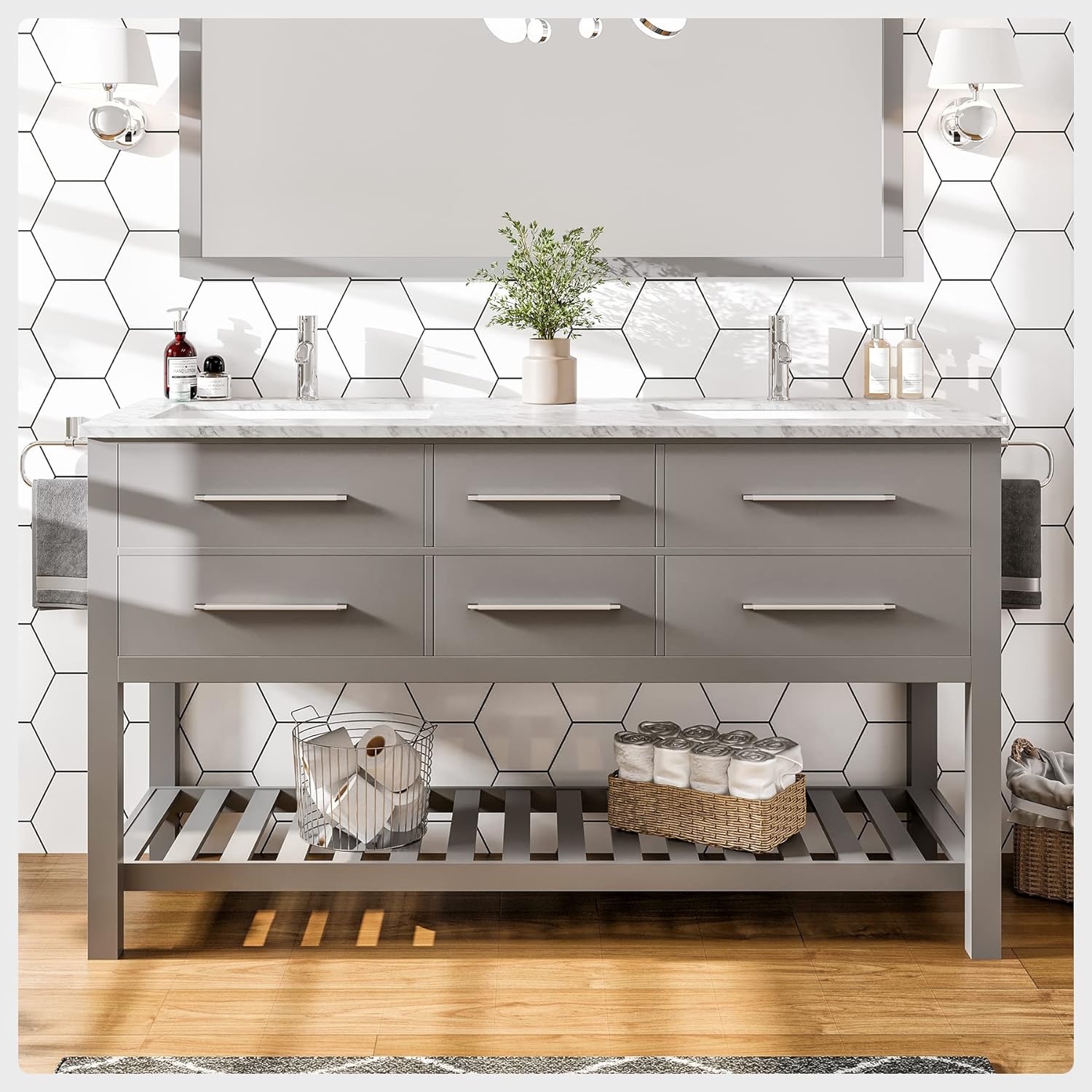
Evaluating Functionality and Features – Countertop Space, Sink Configuration, Storage Options
Functionality is another critical factor to consider when choosing a bathroom vanity. Evaluate your needs and preferences regarding countertop space, sink configuration, and storage options to ensure that the vanity meets your practical requirements.
Consider the amount of countertop space you need for daily grooming tasks such as applying makeup, shaving, or styling hair. Select a vanity with a spacious countertop that provides ample room for toiletries, cosmetics, and other essentials.
When it comes to sink configuration, choose a style that suits your preferences and lifestyle. Options include single sink vanities, double sink vanities, and vessel sink vanities. Consider the number of people using the bathroom and their individual needs when selecting the sink configuration that best meets your requirements.
Storage is another essential consideration when evaluating functionality. Determine your storage needs for toiletries, towels, cleaning supplies, and other bathroom essentials. Choose a vanity with adequate storage options such as drawers, cabinets, or shelves to keep the space organized and clutter-free.
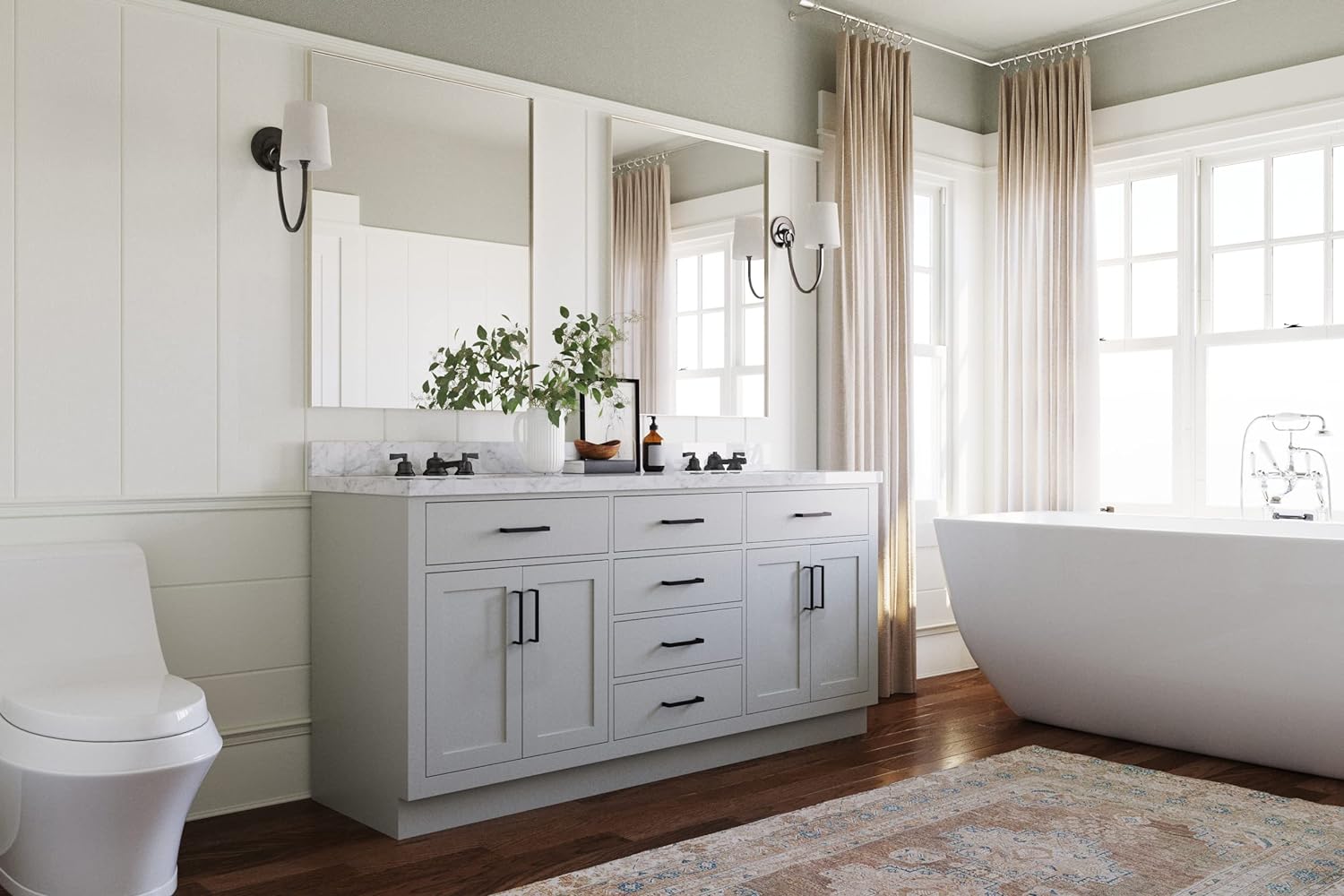
Balancing Aesthetics with Practicality, Style and Functionality
Finding the perfect bathroom vanity involves striking a balance between aesthetics and practicality. While it’s essential to choose a vanity that enhances the overall look and feel of your bathroom, it’s equally important to ensure that it meets your practical needs and lifestyle preferences.
Consider how the vanity will fit within the existing decor theme of the bathroom while also providing the functionality and storage space you need. Look for design elements, materials, and finishes that complement the overall aesthetic of the space while also offering durability, versatility, and ease of maintenance.
Think about how you use the bathroom on a daily basis and choose features and configurations that make your routine more efficient and enjoyable. Whether you prioritize style, functionality, or a combination of both, selecting a vanity that strikes the perfect balance will ensure that your bathroom space is both beautiful and practical.
By carefully considering these factors and evaluating your style preferences and practical needs, you can choose the perfect bathroom vanity that enhances the beauty and functionality of your space. Whether you prefer a minimalist design with clean lines or a traditional vanity with ornate details, selecting the right vanity will create a bathroom space that reflects your personal style and meets your lifestyle requirements.
Bathroom Vanity – Summary
As you embark on the journey of selecting the perfect bathroom vanity, it’s essential to consider both style preferences and functional needs to ensure that your choice enhances the beauty and functionality of your space. In this guide, we’ve explored various aspects of choosing a bathroom vanity, from matching the style to the overall decor theme to evaluating functionality and balancing aesthetics with practicality.
Let’s recap the key points discussed and encourage you to use the information provided to confidently select the perfect bathroom vanity for your home.
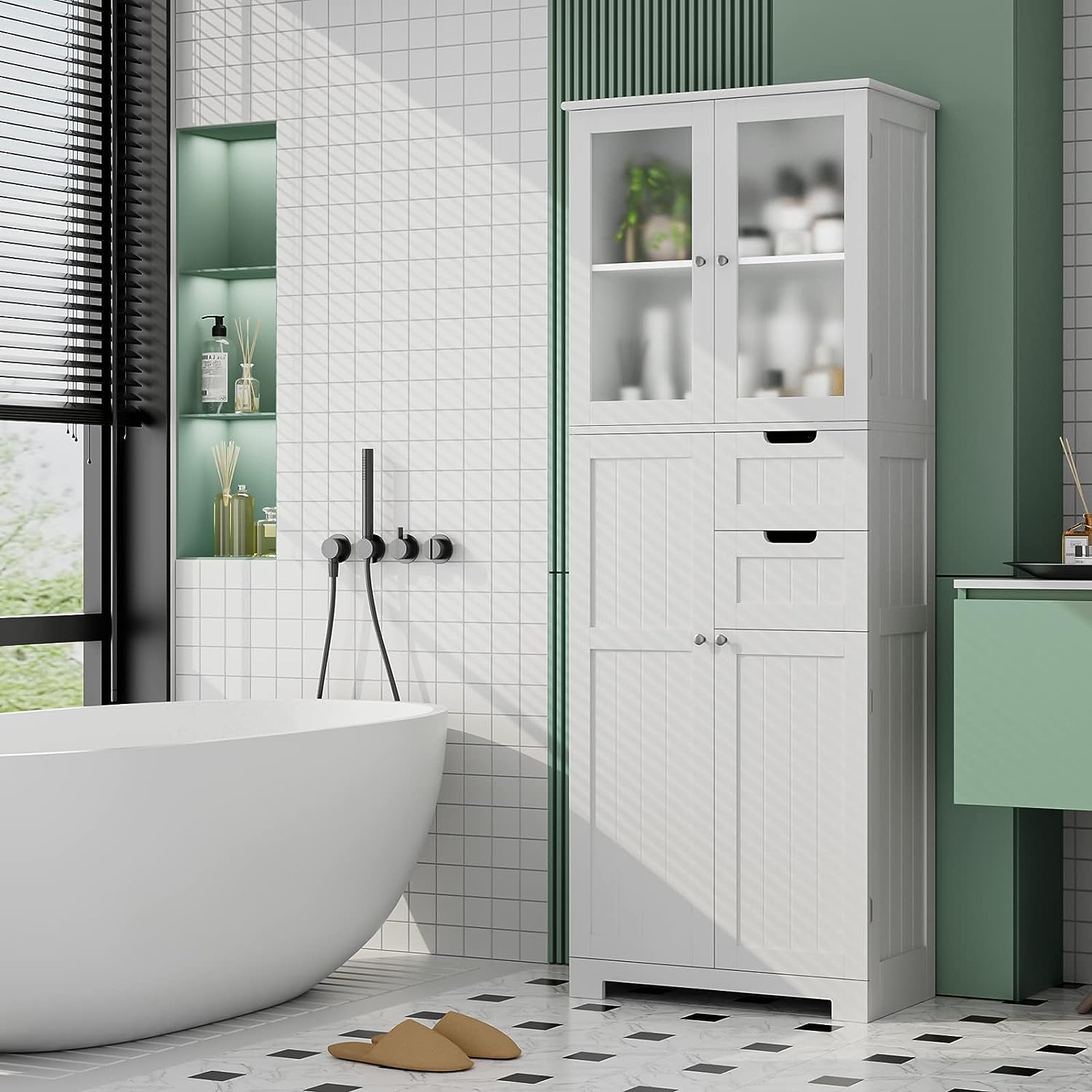
Recap of Key Points Discussed in the Guide
Essential considerations for choosing a bathroom vanity
Exploring Different Vanity Styles: We've delved into various vanity styles, from minimalist and modern to vintage, contemporary, and traditional, highlighting their unique characteristics and recommended design elements.
Understanding Your Space: Assessing bathroom dimensions, determining optimal placement, and evaluating storage needs are crucial steps in selecting the right vanity for your space.
Factors to Consider When Choosing a Vanity: Aesthetic preferences, space and layout considerations, plumbing and installation requirements, budget constraints, and construction implications are all important factors to keep in mind.
Pros and Cons Comparison: We've compared floor-mounted and wall-mounted faucets, exploring their advantages and disadvantages to help you make an informed decision.
Installation Requirements: Plumbing considerations and wall or floor reinforcement requirements vary depending on the type of faucet chosen, and understanding these requirements is essential for a successful installation.
Cost Implications: Initial investment and long-term maintenance and repair costs should be considered when selecting a bathroom vanity to ensure it fits within your budget.
Construction Considerations: Flooring materials, wall structure, and integration with existing bathroom design all play a role in selecting the right vanity for your space.
Choosing the Right Vanity for Your Style and Needs: Matching the vanity style to the overall decor theme, evaluating functionality, and balancing aesthetics with practicality are key considerations when selecting the perfect bathroom vanity.
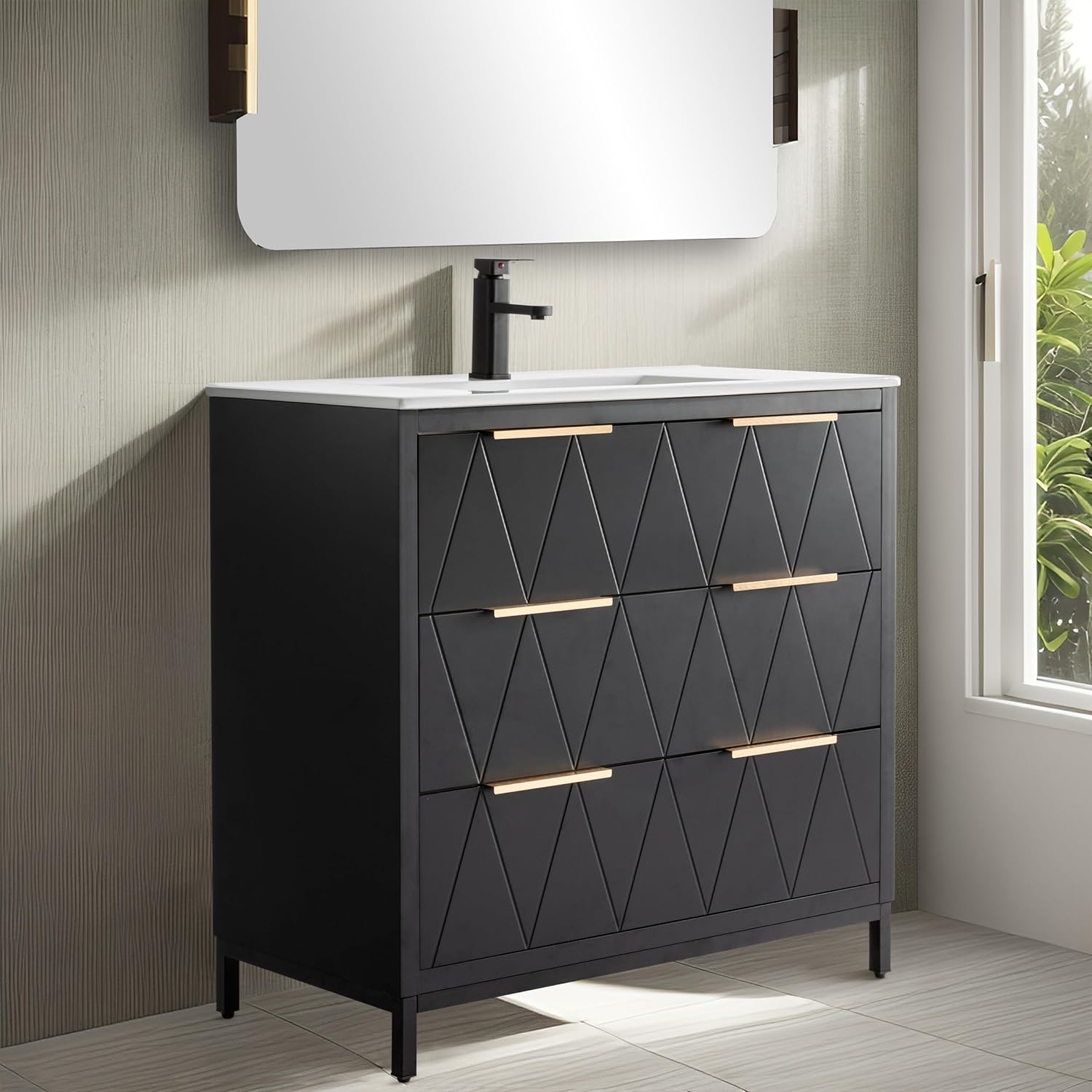
Encouragement for Readers to Use the Information Provided
We encourage you to confidently embark on the journey of selecting the perfect bathroom vanity for your home. Whether you prefer a sleek and modern design, a timeless vintage-inspired look, or a classic traditional aesthetic, there’s a vanity style to suit every taste and preference.
Take the time to assess your space, consider your style preferences and functional needs, and explore the various options available in the market. Don’t be afraid to mix and match styles, materials, and finishes to create a custom vanity that reflects your unique personality and enhances the beauty and functionality of your bathroom space.
Remember that selecting a bathroom vanity is an investment in your home, and choosing the right vanity will not only enhance the aesthetics of your bathroom but also add value and functionality to your space for years to come.
We hope this guide has provided you with valuable insights and practical advice to help you navigate the process of selecting the perfect bathroom vanity. With careful consideration and thoughtful planning, you can create a bathroom space that reflects your personal style and meets your functional needs, turning your vision into reality.

Frequently Asked questions
Remove Obstacles: Before measuring, clear the space of any items that might obstruct your measurements, such as rugs or toiletries. Measure the Width: Wall-to-Wall Measurement: Use a tape measure to determine the width of the area where the vanity will be placed. Measure from one wall to the other, ensuring you account for any door swings or obstructions that could interfere with the vanity placement. For a single-sink vanity, you typically need at least 18 inches of width available; for a double-sink vanity, aim for at least 48 inches124.
Back Wall to Front: Measure the depth from the back wall outward. Standard depths for bathroom vanities range from 17 to 24 inches. Ensure there is enough space in front for comfortable movement—ideally at least 30 inches of clear floor space in front of the vanity. Floor to Countertop: Measure from the floor to where you want the countertop height to be. Standard vanity heights are typically between 30 and 36 inches. Consider who will be using the vanity; taller individuals may prefer a height closer to 36 inches, while shorter users may find 30 inches more comfortable.
Check Existing Features: Location of Fixtures: Note where existing plumbing, electrical outlets, and switches are located. If you’re replacing an existing vanity, keep it in the same position to avoid additional plumbing costs13. Ensure that there’s at least 18 inches from the center of the toilet to the edge of the vanity for compliance with building codes.
Account For Countertop Overhang: Add Extra Inches: If you’re purchasing a vanity without a countertop, remember that countertops usually extend about an inch beyond the cabinet on each side. Factor this into your width and depth measurements when planning your space.
Draw Your Space: Sketch a rough layout of your bathroom, marking where doors, windows, and fixtures are located. This visual can help you better understand how different vanity sizes will fit into your space.
Plan for Future Needs: Think about how your needs might change over time; selecting a versatile size can accommodate future adjustments in style or function.
Door Swings: Failing to account for the swing of bathroom and shower doors can result in a vanity that obstructs access or makes it difficult to open doors fully. Always open doors while measuring to ensure there’s enough clearance.
Ignoring Door Swings: Failing to account for the swing of bathroom and shower doors can result in a vanity that obstructs access or makes it difficult to open doors fully. Always open doors while measuring to ensure there’s enough clearance.
Neglecting Existing Fixtures: Overlooking the placement of electrical outlets, switches, and plumbing can lead to complications. It’s crucial to measure these elements and consider their impact on your vanity choice.
Misjudging Width and Depth: Many people underestimate the space needed for the vanity itself, including countertop overhang. Remember to add an inch or more on either side of the cabinet for the countertop.
Forgetting Clearance Requirements: It’s important to leave at least 18 inches from the edge of the vanity to the center of the toilet for compliance with building codes, as well as ensuring comfortable movement around the space.
Ignoring Height Preferences: Standard vanity heights range from 30 to 36 inches, but this may not suit all users. Taller individuals may prefer a higher vanity, while shorter users might find a lower one more comfortable.
Underestimating Storage Needs: Failing to assess how much storage is required can lead to choosing a vanity that is too small. Consider who will use the vanity and what items need to be stored.
Not Accounting for Baseboards or Trim: When measuring depth, neglecting baseboards or trim can result in a vanity that doesn’t sit flush against the wall, affecting both aesthetics and
Not Anticipating Changes in Use: If you have children or plan on aging in place, consider how your needs might change over time. A vanity that works now may not be suitable in a few years.
Locate Existing Plumbing: Before measuring, identify where the plumbing pipes (both supply and drain) exit the wall. This includes the hot and cold-water supply lines and the drain line. Typically, these are positioned behind the vanity and should be marked clearly.
Distance from Vanity Outline: Measure the distance from the edge of where you plan to place the vanity to where the plumbing comes out of the wall. This will help determine how wide your vanity needs to be to cover the plumbing without obstruction.
Width of Pipes: Note both the height and width of the plumbing pipes. This information is essential for ensuring that your vanity can accommodate them without requiring excessive modifications.
Mark Cutout Locations: Once you have your measurements, mark on the back of the vanity where the plumbing will meet it. You may need to cut holes in the back of the vanity for access to these pipes. Use a hole saw to create openings that match your measurements.
Consider Hole Size: Ensure that the holes you plan to cut are large enough for easy access but not so large that they compromise the structural integrity of the vanity.
Pencil or Tape Marks: Outline where your new vanity will sit against the wall using pencil or tape. This visual guide helps in measuring distances accurately and planning for any necessary cutouts around plumbing.
Ensure Compliance: Familiarize yourself with local building codes regarding plumbing fixtures. For example, there are often requirements about minimum distances between fixtures, such as 15 inches from the center of a toilet to any other fixture.
Measure the Offset: Determine how far off-center the plumbing is from where you want your sink drain to be. This will help you understand the extent of adjustments needed.
Reposition the Vanity: If feasible, you can slightly shift your vanity to align better with the existing plumbing. This may not always be possible, especially if the vanity is already installed or if it affects other fixtures.
Purchase an Offset Drain Kit: These kits are designed specifically for situations where the drain does not align with the sink. They typically include flexible piping that can be adjusted to reach the drain.
Install a 45-Degree Fitting: If your drain pipe is significantly off-center, you might need to use a 45-degree fitting to redirect the drain pipe towards the sink drain. This allows for proper alignment without extensive plumbing work
Custom P-Trap Installation: If your P-trap does not align with the drain pipe, you may need to adjust it by cutting and fitting new pieces of PVC or ABS pipes. Make sure to maintain a proper slope (1/4 inch per foot) for drainage.
Flexible Connectors: In some cases, using flexible connectors can help bridge gaps between misaligned pipes, making installation easier.
Hire a Plumber: If you’re unsure about making these adjustments yourself or if the plumbing situation is complex, it’s wise to consult a professional plumber. They can provide solutions that ensure compliance with local building codes and prevent potential leaks.
Future Needs: If you’re planning any future renovations or changes in your bathroom layout, keep in mind how plumbing placement might affect those plans. It may be worth investing in more extensive plumbing adjustments now.
Wall-to-Wall Measurement: Start by measuring the distance from one wall to the other where the vanity will be placed. This measurement will help you identify the maximum width available for your vanity. Ensure to leave a few inches of clearance on either side to avoid a cramped appearance and allow for easy access.
Common Widths: Bathroom vanities typically come in standard widths ranging from 24 inches to 72 inches. The most common sizes include:
24” to 30”: Suitable for small bathrooms or powder rooms.
36” to 48”: Ideal for medium-sized bathrooms, balancing storage and countertop space.
48 to 60”: Works well in larger bathrooms or shared spaces, accommodating double sinks.
60 to 72 and larger”: Best for master bathrooms or spacious layouts, creating a luxurious feel.
Sink Compatibility: Ensure that your chosen vanity width can accommodate the sink(s) you plan to use. For example: A single sink typically requires a vanity width of at least 24” to 30”.
A double sink setup usually needs a minimum of 60” in width to allow for comfortable spacing between sinks.
Clearance Space: Leave enough room for doors and drawers to open fully without obstruction. A minimum of 30 inches of clear floor space in front of the vanity is recommended for comfortable movement.
Consider Other Elements: Take into account existing features such as mirrors, electrical outlets, and switches that may impact your vanity choice. Ensure that the vanity does not obstruct these elements.
Familiarize yourself with local building codes that may dictate minimum distances between fixtures (e.g., at least 18 inches from the center of the toilet to any other fixture) to ensure your vanity adheres to regulations.
Small Bathrooms – Width Range: 18 to 25 inches: These compact vanities are ideal for extremely small spaces, providing essential storage while maximizing floor space. They typically have limited countertop area but can still feature attractive materials like quartz or marble.
Small Bathrooms – Width Range: 35 to 40 inches: For bathrooms that can accommodate slightly larger vanities, this size range allows for increased storage and countertop space. It works well in shared bathrooms where multiple users may need access to toiletries and other items.
Considerations for Sink Sizes: Ensure that the sink fits well within the vanity dimensions: A single sink typically requires a width of at least 24 to 30 inches.
If you opt for a double sink, ensure that your bathroom can comfortably fit a vanity of at least 60 inches.
Depth and Height: Standard depths for bathroom vanities are usually around 20 to 21 inches, with shallower options available for tighter spaces. The standard height is approximately 32 inches, but taller options (up to 36 inches) are also available for added comfort.
Storage Solutions: Look for vanities that incorporate drawers or shelves to maximize storage without increasing the footprint.
Design Choices: Consider light colors or minimalist designs to create an illusion of more space in small bathrooms.
Description: These vanities are mounted to the wall, leaving the floor space underneath open. This design creates an illusion of more space and makes cleaning easier.
Benefits: Floating vanities can make a small bathroom feel larger and more modern, while also providing additional storage options above.
Compact Single Sink Vanities – Typically ranging from 18 to 30 inches in width, these vanities are designed to fit snugly in smaller spaces.
Benefits: They provide essential storage and counter space without overwhelming the room. Look for models with drawers or shelves for added functionality.
Corner Vanities: Designed to fit into a corner, these vanities optimize otherwise unused space. Benefits: Corner vanities can be particularly useful in very tight bathrooms, allowing you to make the most of every square inch.
Vintage or Antique-Inspired Vanities: These styles add character and charm, often featuring intricate details and unique finishes.
Benefits: A vintage vanity can serve as a focal point in a small bathroom while providing necessary storage without appearing bulky.
Minimalist Vanity: Featuring clean lines and simple designs, minimalist vanities focus on functionality without excess decoration.
Benefits: This style helps maintain an airy feel in small bathrooms, making them look more spacious and organized.
Open Shelf Vanities: These vanities incorporate open shelving beneath the sink instead of traditional cabinet doors.
Benefits: Open shelves provide easy access to towels and toiletries while creating a light, uncluttered look.
Dual-Purpose Vanities: These designs combine a sink with additional features like built-in storage or integrated mirrors.
Benefits: They maximize functionality in limited space, ensuring that everything you need is within reach while keeping the area tidy.
Console Vanities: Console vanities have an open frame with legs, providing a light and airy appearance.
Benefits: They often come with shelves or drawers and can fit well in smaller spaces without feeling heavy or overwhelming.
Vessel Sink Vanities: These vanities feature sinks that sit on top of the countertop rather than being recessed. Benefits: Vessel sinks can add a modern touch and can be paired with compact vanity bases to save space while making a style statement.
Light-Colored or Reflective Finishes: Choosing light-colored vanities (like white or pale wood) or those with reflective surfaces can enhance brightness.
Benefits: Light colors help make small spaces feel larger and more open by reflecting light throughout the room.
Install Shelving: Add triangular or tiered shelves under the sink to create additional storage around plumbing. These shelves can hold baskets for toiletries or cleaning supplies, keeping them organized and accessible.
Use Wire Baskets: Wire organizers can help categorize items under the sink, making it easier to see and access your essentials without creating clutter.
Incorporate Open Shelving: Floating Shelves: Install floating shelves above the vanity to store frequently used items like towels or decorative baskets. This keeps the countertop clear while adding vertical storage.
Open Shelf Vanity: Choose a vanity with an open shelf at the bottom. This allows for easy access to items like towels or storage bins while creating a light and airy feel.
Optimize Drawer Space: Drawer Dividers: Use dividers in drawers to organize smaller items such as hair accessories, makeup, and toiletries. This maximizes drawer space and keeps everything tidy.
Sliding Organizers: Consider installing sliding organizers or tiered drawers to make the most of vertical space inside the vanity.
Add a Mirror Cabinet: Mirror with Storage: Opt for a mirror cabinet that includes hidden storage behind it. This provides a convenient place to store small toiletries while saving counter space.
Use Decorative Bins and Baskets: Wicker or Fabric Bins: Incorporate decorative bins on shelves or under the sink to hide clutter while adding texture and style to the bathroom 14. Choose bins that match your decor for a cohesive look.
Repurpose Furniture: Rolling Cart: Use a small rolling cart as an additional storage solution. It can hold towels, toiletries, or cleaning supplies and can be easily moved as needed.
Stools or Benches: Place a small stool or bench in the bathroom for extra storage; it can hold towels or other essentials while providing a decorative touch.
Maximize Wall Space: Hooks and Peg Rails: Install hooks or peg rails on the walls for hanging towels, robes, or baskets filled with toiletries. This keeps items off counters and utilizes vertical space effectively.
Over-the-Door Storage: Utilize the back of the bathroom door with hooks or hanging organizers for additional storage without taking up floor space.
Choose Multi-Functional Furniture: Vanity with Built-In Storage: Select a vanity that features multiple storage options such as cabinets, drawers, and shelves to accommodate various bathroom essentials without cluttering the countertop.
Install Floating Shelves: Floating shelves provide a stylish way to display and store items without taking up floor space.
Benefits: They can hold toiletries, decorative items, or baskets for organization, keeping essentials within reach while maintaining a clean look.
Use a Mirror with Built-In Storage Description: A mirror that includes hidden storage compartments can serve dual purposes.
Benefits: This not only provides a place to check your appearance but also offers discreet storage for small items like cosmetics and medicines, helping reduce countertop clutter.
Hang Wall-Mounted Organizers: Consider wall-mounted organizers or racks for storing frequently used items.
Benefits: These can include hooks for towels or baskets for toiletries, making it easy to access essentials without crowding the vanity.
Create a Gallery Wall: Use the wall above the vanity to create a gallery of framed art or photos. This personalizes the space and adds visual interest, making the bathroom feel more inviting without sacrificing functionality. Add Built-In Shelving: If possible, install built-in shelves that run along the wall above the vanity.
Benefits: These shelves can store towels, plants, or decorative items while maximizing vertical space in a small bathroom.
Incorporate a Towel Rack or Bar: Install a towel rack or bar above the vanity for easy access to towels. This keeps towels off the countertop while ensuring they are within reach after washing hands or face.
Use Decorative Baskets: Hang decorative baskets on the wall for storing items like rolled towels or toiletries. Baskets add texture and style while providing practical storage solutions that keep items organized and visible.
A leaning ladder shelf can be placed against the wall to hold towels, plants, or decorative items. Benefits: It takes up minimal floor space while providing ample storage options that are easy to reach.
Choose Low-Profile Fixtures: Select low-profile lighting fixtures or sconces that mount directly on the wall. This saves space while adding necessary illumination without encroaching on valuable wall area above the vanity
Remove Obstacles: Before measuring, clear the space of any items that might obstruct your measurements, such as rugs or toiletries.
Measure the Width: Wall-to-Wall Measurement: Use a tape measure to determine the width of the area where the vanity will be placed. Measure from one wall to the other, ensuring you account for any door swings or obstructions that could interfere with the vanity placement. For a single-sink vanity, you typically need at least 18 inches of width available; for a double-sink vanity, aim for at least 48 inches124.
Back Wall to Front: Measure the depth from the back wall outward. Standard depths for bathroom vanities range from 17 to 24 inches. Ensure there is enough space in front for comfortable movement—ideally at least 30 inches of clear floor space in front of the vanity.
Measure the Height Floor to Countertop: Measure from the floor to where you want the countertop height to be. Standard vanity heights are typically between 30 and 36 inches. Consider who will be using the vanity; taller individuals may prefer a height closer to 36 inches, while shorter users may find 30 inches more comfortable.
Check Existing Features: Location of Fixtures – Note where existing plumbing, electrical outlets, and switches are located. If you’re replacing an existing vanity, keep it in the same position to avoid additional plumbing costs13. Ensure that there’s at least 18 inches from the center of the toilet to the edge of the vanity for compliance with building codes.
For Countertop Overhang: Add Extra Inches: If you’re purchasing a vanity without a countertop, remember that countertops usually extend about an inch beyond the cabinet on each side. Factor this into your width and depth measurements when planning your space.
Draw Your Space: Sketch a rough layout of your bathroom, marking where doors, windows, and fixtures are located. This visual can help you better understand how different vanity sizes will fit into your space.
Plan for Future Needs Think about how your needs might change over time; selecting a versatile size can accommodate future adjustments in style or function.
Door Swings: Failing to account for the swing of bathroom and shower doors can result in a vanity that obstructs access or makes it difficult to open doors fully. Always open doors while measuring to ensure there’s enough clearance.
Neglecting Existing Fixtures: Overlooking the placement of electrical outlets, switches, and plumbing can lead to complications. It’s crucial to measure these elements and consider their impact on your vanity choice.
Misjudging Width and Depth: Many people underestimate the space needed for the vanity itself, including countertop overhang. Remember to add an inch or more on either side of the cabinet for the countertop.
Forgetting Clearance Requirements: It’s important to leave at least 18 inches from the edge of the vanity to the center of the toilet for compliance with building codes, as well as ensuring comfortable movement around the space.
Standard vanity heights range from 30 to 36 inches, but this may not suit all users. Taller individuals may prefer a higher vanity, while shorter users might find a lower one more comfortable.
Underestimating Storage Needs: Failing to assess how much storage is required can lead to choosing a vanity that is too small. Consider who will use the vanity and what items need to be stored.
Not Anticipating Changes in Use: If you have children or plan on aging in place, consider how your needs might change over time. A vanity that works now may not be suitable in a few years


